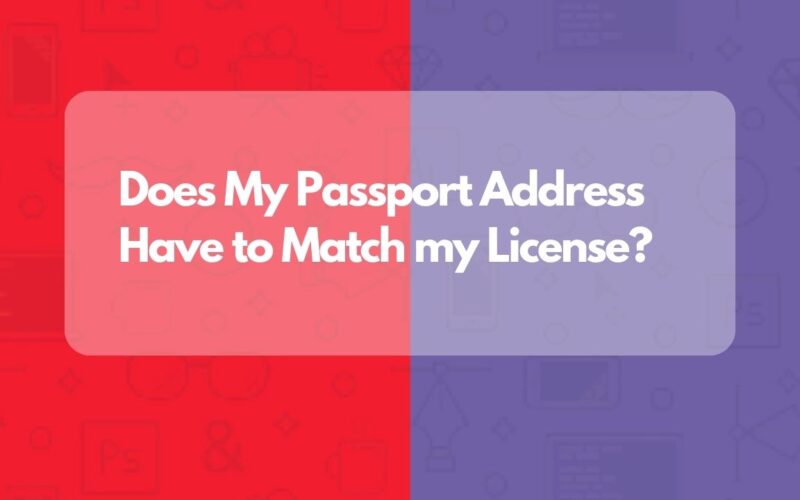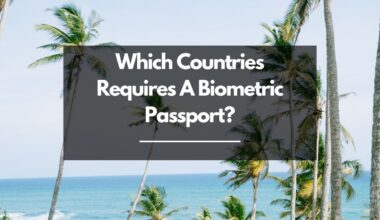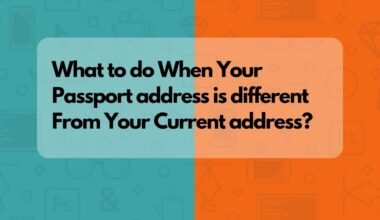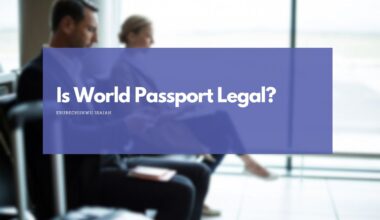As an Amazon Associate, I earn a small commission from qualifying purchases. Learn more about this.
Every traveler’s nightmare is being held up at an airport or border checkpoint because of passport issues. A flagged passport is often the culprit behind these travel hiccups.
Hence, knowing how to check your passport status, can ensure that your travels remain smooth and uninterrupted.
But firstly: what exactly does it mean when we say a passport is “flagged”?
In the simplest terms, a flagged passport is one that has been marked for some reason by immigration or other authorities.
Now, let’s get into this article properly.
Common Reasons for Passport Flagging
Before being skeptical about whether your passport has been flagged or not, you must have seen some signs that could have made you question its validity.
Well, let’s give you some actual reasons that could have led to your passport being flagged.
- Lost or Stolen Report: It’s quite simple. If you ever lose your passport or think it’s been stolen, you’ll likely report it to the authorities, right? Once reported, it gets flagged. This is to prevent someone else from using your passport. If you later find your passport and it was just misplaced, you’ll need to inform the authorities so they can remove the flag.
- Unpaid Government Debts: This might sound strange, but sometimes if you owe money to the government, your passport can be flagged. This could be for unpaid taxes or other government-related debts. It’s a way for the government to say, “Hey, you need to clear this up before traveling.”
- Legal Issues or Court Orders: In some cases, if you’re involved in legal issues, your passport might be flagged. For instance, if there’s a court order that says you shouldn’t leave the country, your passport will be flagged to make sure this order is followed.
- Errors or Mistakes: Sometimes, simple errors can cause a flag. Maybe there’s a mistake in the passport itself, like a wrong date of birth or name spelling. Or perhaps there was an error when the passport was being processed. Errors can be fixed, but they can cause a temporary flag until they’re sorted out.
How to Determine if Your Passport is Flagged
1. Check Your Mail and Email
Frequently, if there’s an issue with your passport, government authorities will try to notify you.
This can be an old-school letter in your mailbox or a modern, speedy email – depending on what contact information they have for you.
Make a routine to keep an eye on both, especially as your travel dates approach. Check for any unexpected messages from your country’s passport office or any government agency.
Sometimes, they might inform you about an issue or flag that’s been placed on your passport. Make sure to check your spam folder in your email too; important notifications sometimes end up there!
2. Reach Out to Passport Agencies Directly
In the case that no notification has come through your door or inbox, taking a proactive approach can be invaluable. Don’t hesitate to contact your country’s passport agency directly.
A quick call or an email to them asking about the status of your passport can save you from potential future hassles.
Be prepared to provide them with your passport number and some additional personal details to verify your identity. Remember, it’s perfectly okay to ask them questions – it’s their job to assist you, after all.
3. Inspect Your Passport Physically
A bit basic, perhaps, but it’s always a smart move to visually inspect your passport. Ensure that all the information is accurate and up to date, and that your passport is in good physical condition.
If you notice anything odd, like errors in your personal information or significant wear and tear, it’s best to sort those out before you travel.
Even if these issues don’t flag your passport, they can still cause problems during your journey.
4. Check with Your Travel Agent
If you’re utilizing the services of a travel agent or a travel agency, leverage their expertise.
These folks are in the business of getting people from point A to point B smoothly, and they deal with passport issues regularly.
Simply ask them if there’s a way they can check your passport status for you, or if they’ve been notified of any issues when booking your travels.
5. Watch for Signs at Border Crossings:
While not the most reliable method, if you’re frequently pulled aside during your travels or asked extra questions, it might be an indicator that there’s a flag on your passport.
It’s important to differentiate between routine checks, which happen to everyone now and then, and recurrent issues that hint at a deeper problem.
Can you check yourself if your Passport has been flagged?
The thought of having a flagged passport can be nerve-wracking for many, especially when you have travel plans on the horizon. So, it’s only natural that you’d want to check this yourself and not be in for any surprises.
Here’s the scoop on how you can go about it.
First and foremost, many countries do offer online services that allow citizens to check the status of their passports.
This is usually available on the official website of your country’s passport issuing authority. It’s typically a simple process: you’d enter your passport number and some personal details, and the system will inform you of its status.
However, not all countries offer such services.
If you find that’s the case for your nation, don’t worry. You still have options. You could call the passport office directly. Yes, it might involve a bit of waiting on the line, but it’s worth the peace of mind.
Explain your concerns and they should be able to give you a clear answer.
While these are the primary methods, there’s also the approach of visiting a local passport office or agency in person. This might sound a bit old-fashioned in the digital age, but face-to-face interactions can sometimes resolve matters more quickly and clearly.
Final Thoughts
Now, Is it a big deal?
Well, it can be. If your passport is flagged, you might face some extra questions or checks when you’re traveling. In some situations, you might even be stopped from traveling until the issue is sorted out.
It’s also good to remember that different countries have different rules and systems. So, a flagged passport in one country might not be flagged in another. But it’s always better to be safe and check if there’s a flag on your passport, especially if you have plans to travel.







